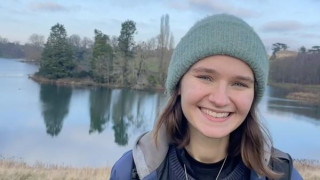Kotka features the richest variety of butterflies and moths of any municipality in Finland

Researchers at the University of Jyväskylä studied the number of butterfly species in Finnish municipalities using over three million butterfly observations reported to the Finnish Biodiversity Information Facility between 2001 and 2020. The researchers developed a species accumulation curve model that specified the diversity of butterfly fauna in municipalities.
“The number of observations was enough to estimate the number of lepidopteran species in 97 municipalities using the species abundance curve,” says Senior Lecturer Anssi Vähätalo from the University of Jyväskylä. “The model estimate the number of species in each municipality for equal number of observations allowing for the comparison between municipalities.”
The researchers found that the numbers of species were lowest in the northern municipalities and increased towards the southern coastal areas. Kotka was shown to be the most biodiversity-rich municipality. In the neighbouring municipalities of Hamina and Pyhtää, lepidopteran fauna was almost as rich as in Kotka.
Species richness is an indicator of diversity
The 878 native butterfly species selected for the study represent a wide range of species. A large number of lepidopteran species in a municipality also means a large number of plant species. Many lepidopteran species can only live on one or a few plant species.
“A high number of plant and lepidopteran species also indicates many different types of habitats,” says Vähätalo. “For example, there is a large area of peatland in Valkmusa National Park in Kotka. In addition, Kotka has a seaside.”
Butterfly community of Enontekijä is the most endangered
In general, the most endangered butterfly species were found in the municipalities on the southern coast, where the total number of species was also the highest.
“By taking into consideration habitat diversity in land use planning,” explains Vähätalo, “municipalities on the southern coast can maintain a large species diversity and prevent many endangered species from disappearing from Finland.”
The lepidopteran fauna under the most threat was found in the municipality of Enontekiö, althought it had the lowest total number of butterfly species.
“Butterflies and moths that live in Enontekiö (and north of the artic circle in general) are threatened by global warming,” says Vähätalo. “Many species live on the fells and cannot unfortunately migrate further north due to the Arctic Ocean. Enontekiö cannot do anything about climate change but developing sustainable tourism and respects northern nature can help fight the extinction of northern species.”
Report your nature observations to the Finnish Biodiversity Information Facility
Researchers hope that Finns will continue to report their observations of butterflies and insects to the database of the Finnish Biodiversity Information Facility. This information can be used, for example, in biodiversity research and threat assessments.
Article information:
- Identifying sites with high biodiversity value using filtered species records from a biodiversity information facility, Rémi Duflot, Anssi V. Vähätalo, Diversity and Distribution, 22 May 2024
- Link to article: https://onlinelibrary.wiley.com/doi/10.1111/ddi.13864
- Doi-number: https://doi.org/10.1111/ddi.13864








